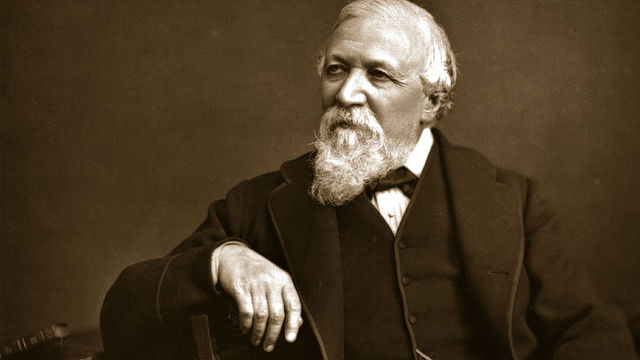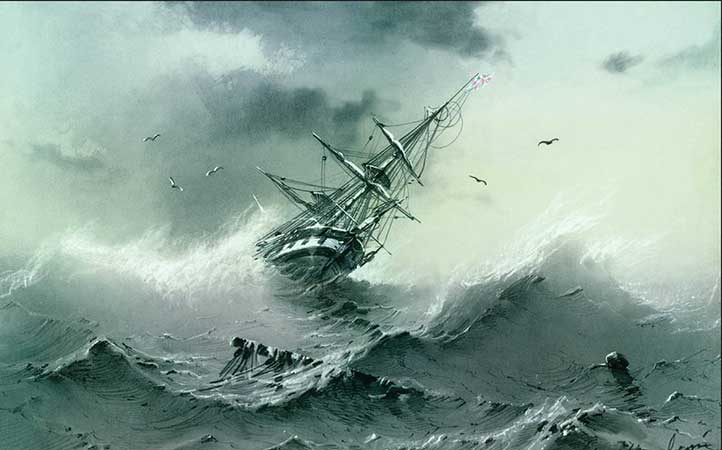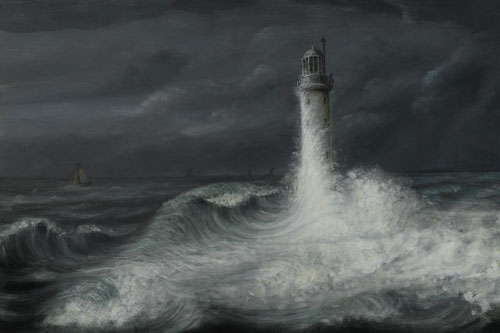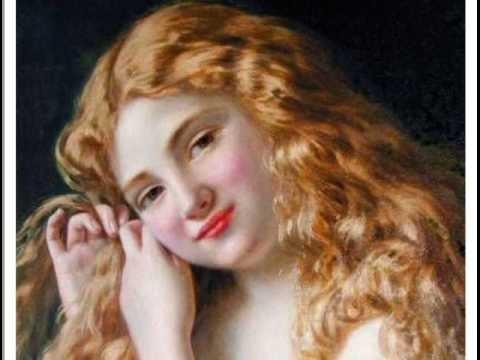About the poet:
Robert Browning was an English poet and playwright. His mastery of dramatic verse, and in particular the dramatic monologue, made him one of the foremost Victorian poets.
Browning was born on 7th May 1812 in South London. His early career began promisingly but was not a success. In 1846, Browning married the older poet Elizabeth Barrett, who was considerably better known than himself at the time. By the time of her death in 1861, he had already published the crucial collection entitled Men and Women. The collection Dramatis Personae and the book-length epic poem The Ring and the Book followed.
Today Browning’s most critically esteemed poems are his dramatic monologues Childe Roland to the Dark Tower Came, Fra Lippo Lippi, Andrea Del Sarto, and My Last Duchess. His abortive recital of this last work during a dinner-party was recorded on an Edison wax cylinder, and is believed to be the oldest surviving recording made in England of a notable person.
Browning died at his son’s home Ca’ Rezzonico in Venice on 12th December 1889. He was buried in Poets’ Corner in Westminster Abbey, and his grave now lies immediately adjacent to that of Alfred Lord Tennyson.
About My Last Duchess:
“My Last Duchess” by Robert Browning is frequently anthologised as an example of the dramatic monologue. It first appeared in 1842 in Browning’s collection of poetry entitled Dramatic Lyrics.
The poem is preceded by the name “Ferrara“, indicating that the speaker is most likely Alfonso II d’Este, the fifth Duke of Ferrara. At the age of 25, the Duke married Lucrezia di Cosimo de’ Medici, the 14-year-old daughter of Cosimo I de’ Medici, the Grand Duke of Tuscany, and his wife Eleonora di Toledo.
Thus the poem is set during the late Italian Renaissance. The speaker here is giving the emissary of the family of his prospective new wife a tour of the artworks in his home. Commentators say that this was presumably a third or fourth tour since Browning could have easily written ‘second’ but did not do so. In any case, the Duke draws a curtain to reveal a painting of a woman, explaining that it is a portrait of his late wife. He then invites his guest to sit and look at the painting.
Lucrezia was not well educated, and the Duke’s family considered the Medicis “nouveau riche” in comparison to the venerable and distinguished Este family. But she came with a sizeable dowry, and the couple married in 1558. The Duke then abandoned her for two years before she died on 21st April 1561, at the age of 17. There was a strong suspicion that she was poisoned. The Duke then sought the hand of Barbara, eighth daughter of the Holy Roman Emperor Ferdinand I and Anna of Bohemia and Hungary, who was also the sister of the Count of Tyrol, Ferdinand II. The count was in charge of arranging the marriage, and the chief of his entourage, a man named Nikolaus Madruz, a native of Innsbruck, was his courier. Madruz is presumably the silent listener in this poem.
The setting of My Last Duchess:
This poem is set in the Duke’s palace, perhaps in a separate room where all the artwork was kept. That such a room existed is an evidence of the fact that the painting of the Duke’s last wife is not the only thing to see there. The Duke also shows off a sculpture in the vicinity of the said painting.
Summary of My Last Duchess:
The poem consists of 56 lines in total. These lines are not divided into stanzas. However, they are divided into meaningful segments for the purposes of this summary in order to make the poem easier to follow and understand.
Lines 1 – 4:
That’s my last Duchess painted on the wall,
Looking as if she were alive. I call
That piece a wonder, now; Fra Pandolf’s hands
Worked busily a day, and there she stands.
In these lines, the Duke tells Madruz that they are looking at a portrait of his previous duchess, Lucrezia. The portrait makes it look as if she is alive, so he considers it amazing. It had been painted by Fra Pandolf over the course of a full day.
Lines 5 – 10:
Will’t please you sit and look at her? I said
“Fra Pandolf” by design, for never read
Strangers like you that pictured countenance,
The depth and passion of its earnest glance,
But to myself they turned (since none puts by
The curtain I have drawn for you, but I)
In these lines, the Duke asks Madruz whether he would like to sit for w while and look at the painting of Lucrezia. He mentioned Fra Pandolf for a reason. Strangers like Madruz often wonder how Lucrezia got such an expression on her face while she was being painted, for her expression shows much passion. They believe it must be the presence of her husband that caused it, and indeed the curtain that is always drawn over the portrait is only ever removed by the Duke.
Lines 11 – 24:
And seemed as they would ask me, if they durst,
How such a glance came there; so, not the first
Are you to turn and ask thus. Sir, ’twas not
Her husband’s presence only, called that spot
Of joy into the Duchess’ cheek; perhaps
Fra Pandolf chanced to say, “Her mantle laps
Over my lady’s wrist too much,” or “Paint
Must never hope to reproduce the faint
Half-flush that dies along her throat.” Such stuff
Was courtesy, she thought, and cause enough
For calling up that spot of joy. She had
A heart—how shall I say?— too soon made glad,
Too easily impressed; she liked whate’er
She looked on, and her looks went everywhere.
In these lines, the Duke says that many people other than Madruz have also put their fear behind to ask about Lucrezia’s expression. He answers the question saying that it was not only his presence that rendered it. Perhaps it was something as simple as Fra Pandolf asking her to reveal her hand from beneath her mantle, or telling her that paint cannot do justice in reproducing her beautiful image. Lucrezia would believe that such compliments were reason enough to be joyful. She was always very easily impressed and like everything that met her gaze.
Lines 25 – 34:
Sir, ’twas all one! My favour at her breast,
The dropping of the daylight in the West,
The bough of cherries some officious fool
Broke in the orchard for her, the white mule
She rode with round the terrace—all and each
Would draw from her alike the approving speech,
Or blush, at least. She thanked men—good! but thanked
Somehow—I know not how—as if she ranked
My gift of a nine-hundred-years-old name
With anybody’s gift. Who’d stoop to blame
In these lines, the Duke says that everything delighted Lucrezia equally. His gift of a favour was weighted equal to the sun set, a bunch of cherries some interfering person had brought for her, or the white mule she often rode on. All of these things made her blush. When she thanked other men for their gifts, she seemed to rank those above the gift of the Este family name.
Lines 35 – 43:
This sort of trifling? Even had you skill
In speech—which I have not—to make your will
Quite clear to such an one, and say, “Just this
Or that in you disgusts me; here you miss,
Or there exceed the mark”—and if she let
Herself be lessoned so, nor plainly set
Her wits to yours, forsooth, and made excuse—
E’en then would be some stooping; and I choose
Never to stoop. Oh, sir, she smiled, no doubt,
In these lines, the Duke tells Madruz that there was no point in taking up the issue of her frivolous behaviour with Lucrezia. Even if one could tell her eloquently what she was doing right and what she was doing wrong, she would either be offended or else she would try to quarrel instead. In either case, the Duke believes it would be a manner of stooping below his proper rank, and so he would not do either.
Lines 44 – 48:
Whene’er I passed her; but who passed without
Much the same smile? This grew; I gave commands;
Then all smiles stopped together. There she stands
As if alive. Will’t please you rise? We’ll meet
The company below, then. I repeat,
In these lines, the Duke assures Madruz that Lucrezia always smiled when he passed by her, but so did everyone else. So then he issued commands and her smiling stopped altogether. At this point, he asks Madruz if he would like to leave the gallery now, and go down to meet the rest of the people Madruz had come with.
Lines 49 – 56:
The Count your master’s known munificence
Is ample warrant that no just pretense
Of mine for dowry will be disallowed;
Though his fair daughter’s self, as I avowed
At starting, is my object. Nay, we’ll go
Together down, sir. Notice Neptune, though,
Taming a sea-horse, thought a rarity,
Which Claus of Innsbruck cast in bronze for me!
In these lines, the Duke says that he has no doubt that his just demand of a dowry will be met by Madruz’s master, the Count, even though he only wants the Count’s daughter. They will go down together, but first, Madruz might be interested in looking at a rare sculpture of Neptune taming a sea horse in bronze that Claus of Innsbruck had made for the Duke.
Some online learning platforms provide certifications, while others are designed to simply grow your skills in your personal and professional life. Including Masterclass and Coursera, here are our recommendations for the best online learning platforms you can sign up for today.
The 7 Best Online Learning Platforms of 2022
- Best Overall: Coursera
- Best for Niche Topics: Udemy
- Best for Creative Fields: Skillshare
- Best for Celebrity Lessons: MasterClass
- Best for STEM: EdX
- Best for Career Building: Udacity
- Best for Data Learning: Pluralsight
















